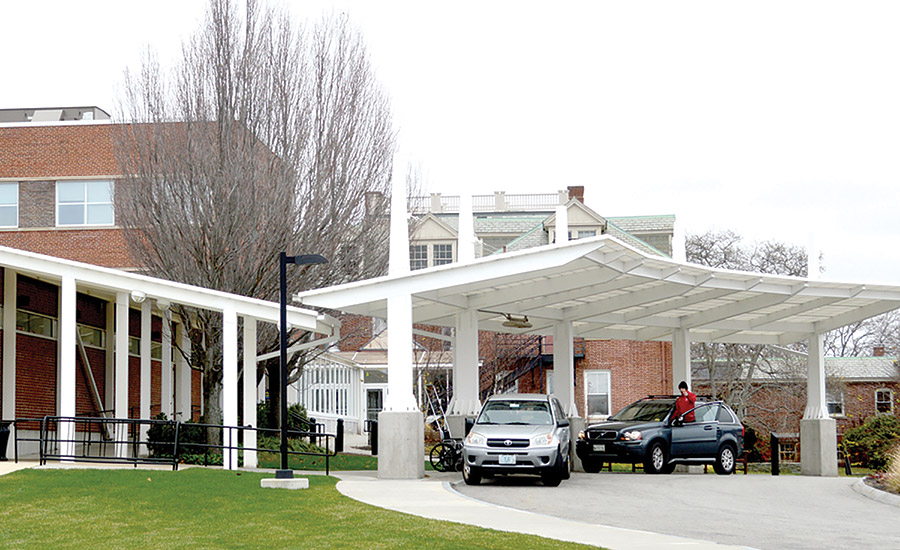Anna Jaques Hospital in Newburyport, MA, opened as a small community medical facility in 1884. The main building was constructed at the turn of the 20th century and then greatly expanded in the mid-1970s to early 1980s.
As part of the HVAC design, 100% outdoor air handling systems serving the expanded facility were equipped with energy recovery wheels (also known as enthalpy wheels) to minimize the heating and cooling costs associated with 24/7 operation. The inclusion of ERV technology in HVAC designs is sometimes chosen as a long term investment for many types of buildings. The lower price of downsized chillers, boilers, or packaged rooftop units can often offset the initial investment in ERV, while ongoing annual operating costs to condition the incoming outdoor air may be lowered by as much as 80%.
The sheet metal cabinet enclosures on larger air handling systems frequently outlive their internal mechanical components, which are typically replaced once or even twice within the lifetime of the unit. The original energy recovery wheels at Anna Jaques reached the end of their useful life after approximately 20 years of continuous service. With no way to effectively clean or restore the wheels, and the original manufacturer no longer supporting the product, the hospital’s facility maintenance staff was forced to remove the energy transfer media.
David Fowler, the hospital’s current senior director of support services, recalls that the decision to remove the energy transfer media came after exploring several options. A complete overhaul of the HVAC system was not an affordable option and the replacement wheels he researched would not fit through available access points into the mechanical rooms housing the AHUs. The only solution at the time was to remove the media and abandon the benefits of the energy recovery wheels.
It was several years later that Fowler met representatives from Airxchange at a facilities management trade show and learned about a possible solution in their modular replacement wheel design.
“Until I met with Airxchange, I was unaware of any replacement wheels that could be delivered and assembled within the tight quarters of our equipment rooms and air handlers,” he recalls.
Airxchange replacement wheels feature non-corroding polymer energy transfer media segments that can be removed and cleaned as necessary to ensure performance for the life of the product. The company says the lightweight segments are held in place by a rigid structural stainless steel wheel. The wheel, drive mechanism, and outboard wheel bearings are all supported by a structural galvanized steel cassette frame. Every component is designed to be assembled in the field with conventional hand tools (sockets, rivet gun, Allen wrenches). Airxchange assembles and tests the entire field replacement kit at the factory before it is shipped and assembled onsite by an Airxchange technician.
The Airxchange Aftermarket Energy Recovery Solutions team specified two 9-ft diameter wheels that were sized to match the performance of the original wheels. The estimated total installed costs were presented to the hospital.
“Energy efficiency projects compete for funding with other projects, such as investing in IT, so our proposals must present an attractive return on investment,” says Fowler.
With a pre-approved gas efficiency incentive from utility provider National Grid, plus a budget number to prepare and button-up the air handlers following assembly of the replacement wheels, Fowler was able to present a financially compelling incentive for the hospital to move forward with the project
The results of the efforts by Fowler and his technical staff are two new energy recovery wheels that are expected to save energy for another 20+ years. And unlike their predecessors, the new wheels are completely serviceable, with a five-year warranty and a full line of available replacement parts.
The modular design of the Airxchange replacement wheels enabled Anna Jaques Hospital to once again recapture valuable energy from exhaust air, indefinitely extending the energy efficient design decisions made in the 1970s and 1980s.


